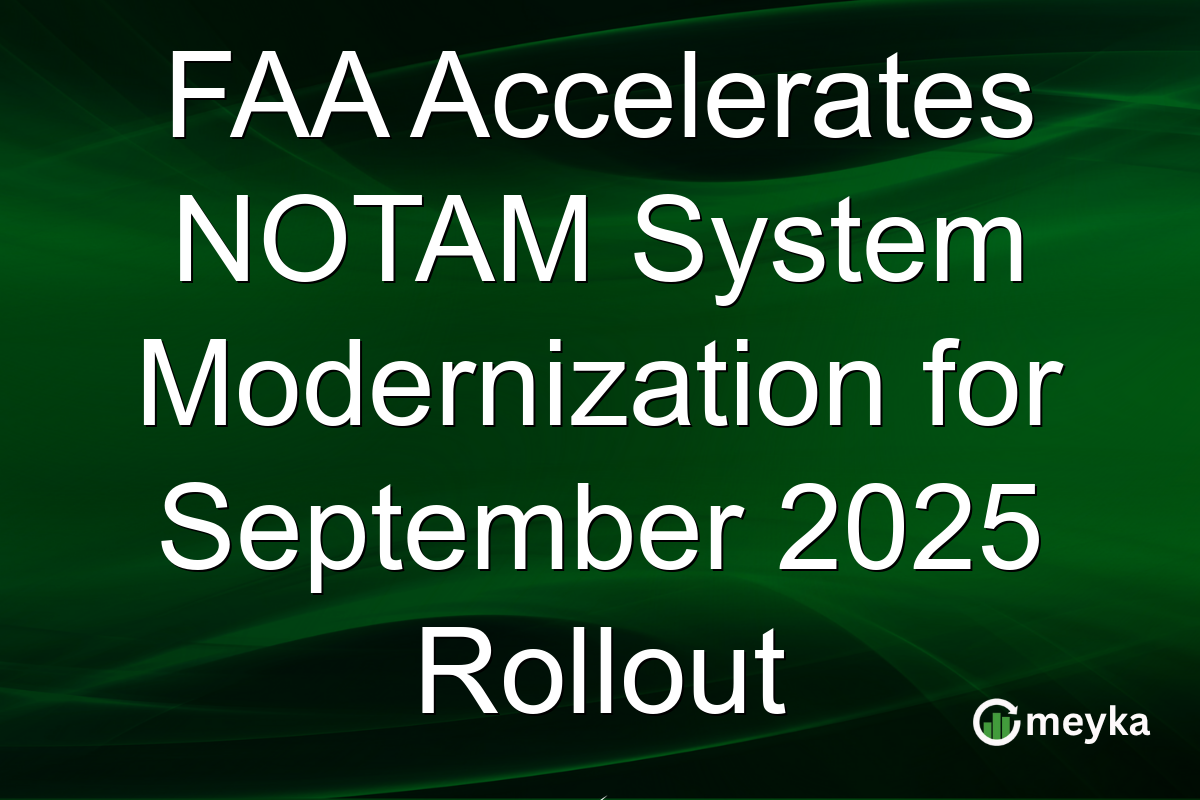FAA Accelerates NOTAM System Modernization for September 2025 Rollout
The Federal Aviation Administration (FAA) is moving quickly to modernize its Notice to Air Missions (NOTAM) system, targeting a complete rollout by September 2025. This modernization effort aims to enhance aviation safety and efficiency, addressing the increasing demands placed on air traffic control systems. With the aviation industry always evolving, it’s crucial to implement updates that support these advancements.
Why Modernize the NOTAM System?
Modernizing the NOTAM system is essential to keep up with the rapid changes in aviation technology and traffic management. The current system has shown vulnerabilities, particularly in message distribution and comprehension. By overhauling the system, the FAA intends to streamline the dissemination of critical information, thereby improving response times and reducing errors. According to recent reports, this updated system will provide more reliable and accessible information to pilots and controllers. This change aims to mitigate misunderstandings that could potentially compromise aviation safety, a crucial goal in today’s increasingly crowded skies.
Key Features of the New System
The upcoming NOTAM system will incorporate several key features. These include improved user interfaces and data management capabilities, allowing for more efficient information processing. The integration of advanced technologies promises greater reliability and security, which is particularly important given the system’s role in global aviation safety. Furthermore, the streamlined process is expected to enhance the efficiency of Boeing’s operations, as the company, which is a major player in the aerospace sector, relies heavily on timely and accurate NOTAM data. With Boeing’s stock currently priced at $229.61 and a market cap of approximately $173.67 billion, these enhancements could positively impact the company’s operational efficacy and, ultimately, its bottom line.
Impact on Aviation Safety
The modernization of the NOTAM system is expected to significantly bolster aviation safety. The system will offer real-time updates and seamless communication across all levels of air traffic control. This, in turn, will help eliminate out-of-date messages that could lead to costly mistakes or delays. Moreover, with the FAA promising a more robust service by September 2025, industry experts anticipate a marked reduction in incident rates attributable to miscommunication. As reported by industry sources, this initiative will create a more adaptable airspace management system, crucial for maintaining safety in an environment characterized by increasing air traffic.
The Broader Impact on the Aviation Industry
The modernization of the NOTAM system stands to benefit the entire aviation industry. Airlines, pilots, and air traffic controllers will all gain from a more reliable system. The improvements are designed to foster a collaborative environment where information is shared efficiently, reducing operational hiccups and enhancing overall flight safety. The effect on major industry players like Boeing is expected to be positive. Although Boeing has faced financial challenges, as reflected in a recent drop in its stock price by 0.49%, the company’s strategic positioning in the market could improve with the enhanced operational environment. With upcoming earnings announcements and the continuous push for technology integration, stakeholders remain optimistic about the potential for growth.
Final Thoughts
In summary, the FAA’s acceleration of the NOTAM system modernization reflects a crucial step toward supporting the industry’s growth and ensuring aviation safety. By September 2025, this initiative promises to enhance the reliability of information crucial for decision-making in air traffic management. As investors look to platforms like Meyka for real-time insights, staying informed on such developments becomes pivotal. With companies like Boeing relying on these advancements, the modernized NOTAM system will likely support the broader goals of efficiency and safety in the aviation sector.
FAQs
The modernization aims to improve information reliability and accessibility, enhancing aviation safety and efficiency in response to increased air traffic demands.
It will provide real-time updates and seamless communication, reducing risks associated with outdated information and improving overall flight management.
Boeing, a major aerospace player, stands to gain operational efficiency from better information flow, supporting its global operations and potential market growth.
Disclaimer:
This is for information only, not financial advice. Always do your research.






